Soaked with Knowledge: Kulshan Creek at Rasar State Park
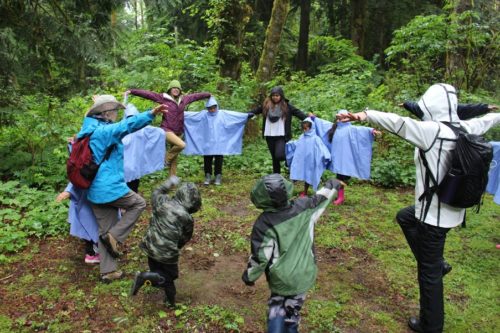
All photography courtesy of Adam Bates, graduate student in the Institute’s 15th cohort.
Youth have a unique skill in creating adventures out of anything. So even though I had been to tree planting on Cornet Bay and the Migratory Bird Festival with the Kulshan Creek Neighborhood Program, both large and expansive day trips, our last trip to Rasar State Park felt no less adventurous!
The day started off wet. That might seem ubiquitous living in western Washington but we had been without rain for two full weeks at this point. The rain was a welcome change from weeks of dry, hot, sunny days.
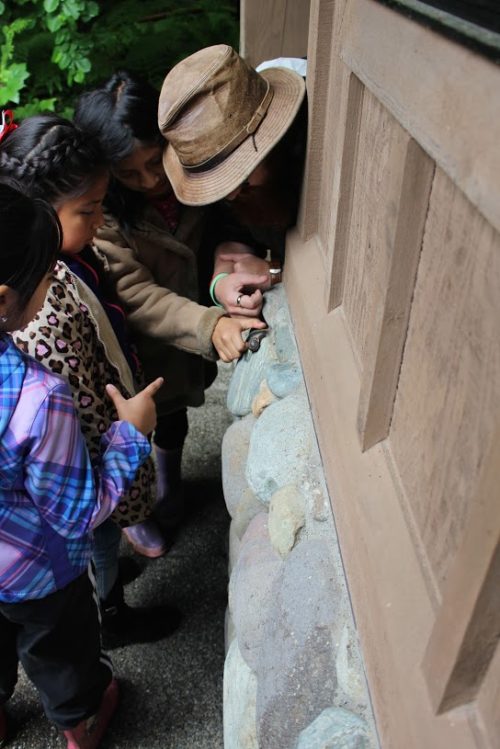
Observing snails and slugs.
All the rain exposed some of the slimier natural inhabitants of the park: snails and slugs. Crawling along on buildings, plants and trials, students were finding them left and right. By the end of the outing I had seen a dozen and a half. Just imagine how many we saw between the thirty of us!
Sasha Savoian, a graduate student at the Institute, gathered us all to the field after our initial exploration. This year’s theme for the Kulshan program is the Skagit River, and how it connects everything in the ecosystem. She reviewed watersheds, the Skagit River valley and what is a web of life. After the review, Sasha dove into the topic of salmon.
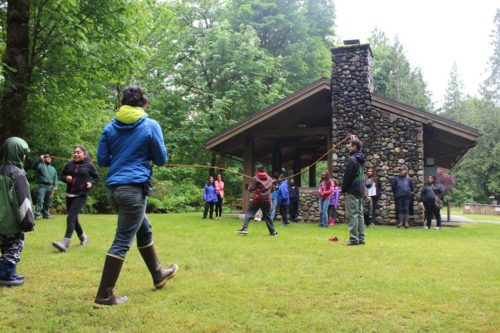
Sasha, in the blue, instructing the Salmon Run game.
By this point in students lives, the life cycle of the salmon has been taught over and over in school. Sasha brought them a new way of thinking about it: the Salmon Run game. Instead of just reviewing on a board what the life cycle of the salmon is, students acted out living in a redd, swimming past predators such as bear and eagles, retrieving marine nutrients while not being caught by two fisherwomen, and finally traveling to the spawning grounds by getting through turbines.
Each round represented a different year, with some years adding more fisherwomen or decreasing predator count. After the completion of each round Sasha led a short discussion on what happened that ‘year’ in the life of the salmon. When a student asked how many fish usually survive to be adults, Sasha replied “about two for every 3000 born.” The life of the salmon, is truly a “hard knock life!”
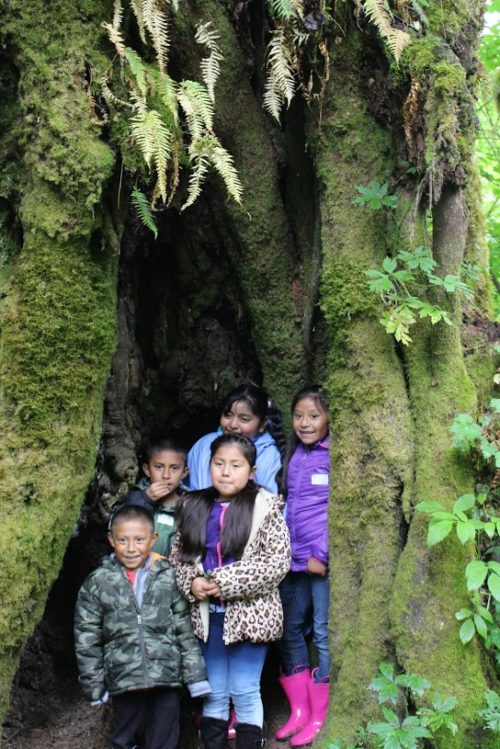
Students inside a tree at the park.
After our games all of us explored deep into the park. With each stop you could hear parents and instructors ask “how does this planet/animal connect to the Skagit river?” Toward the end of the day, we had explored the forest, Skagit river, open fields and every place in between.
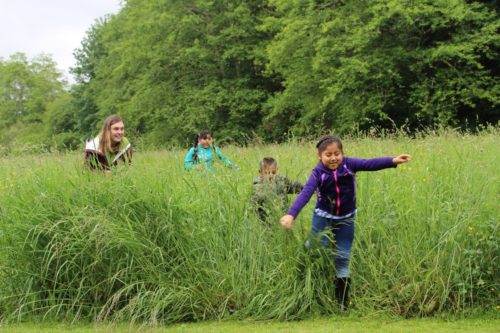
Running out of the grass after a round of “Camouflage.”
These students really did create an adventure out of a rainy day in the park!

